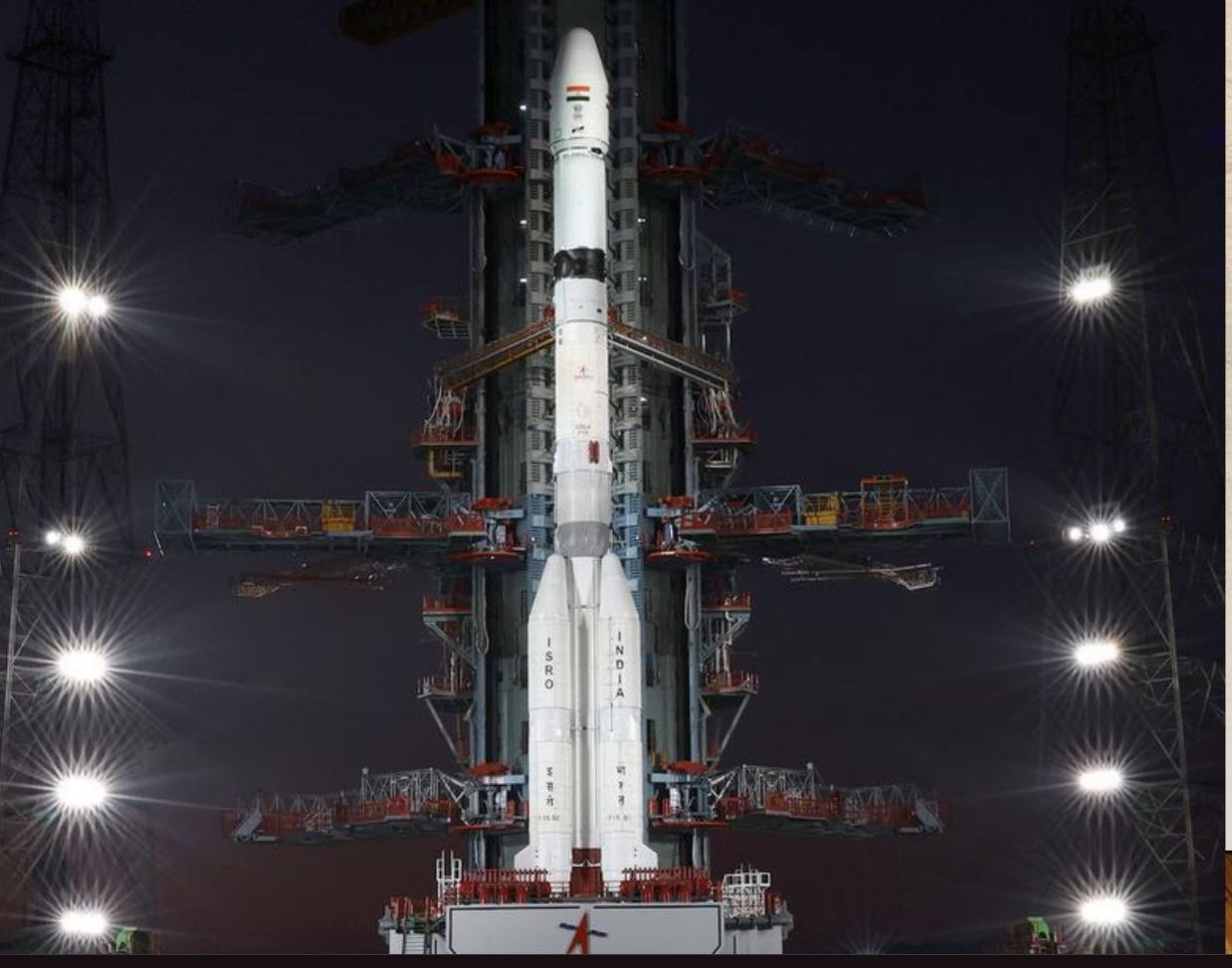Index:
- The Impact of Classifying Denotified Tribes
- Union Budget: Understanding its Formulation and Implications
- Why Greenland’s Crystal Blue Lakes Have Turned Brown
- Guillain-Barré Syndrome (GBS) Outbreak in Pune – Key Insights
- WHO Guidelines on Salt Consumption
- ISRO’s Historic 100th Launch from Sriharikota
- DEEPSEEK: THE CHINESE AI DISRUPTOR SHAKING GLOBAL MARKETS - Infographic
- KEY INSIGHTS FOR EDUCARION IN RURAL INDIA ASER 2024 - Infographic
1. The Impact of Classifying Denotified Tribes
Context:
- The Anthropological Survey of India (AnSI) and Tribal Research Institutes (TRIs) have completed a first-of-its-kind classification of 268 denotified, semi-nomadic, and nomadic tribes after a three-year study.
- These communities are being categorized under Scheduled Castes (SCs), Scheduled Tribes (STs), and Other Backward Classes (OBCs).
Background
- The Criminal Tribes Act of 1924 was repealed in 1949, decriminalizing certain communities.
- Several commissions (Kaka Kalelkar Commission, Lokur Committee, Mandal Commission, Renke Commission, Idate Commission) attempted classification but lacked a comprehensive approach.
- The Idate Commission (2017) listed 1,200 denotified, semi-nomadic, and nomadic tribes, but 267 were not categorized.
Key Findings
- 268 tribes have now been classified.
- 179 communities are placed in SC, ST, or OBC lists.
- 85 communities recommended for classification.
- 63 communities remain “not traceable” due to migration or assimilation.
Impact of Classification
- Political Implications:
- Activists in Uttar Pradesh, Haryana, Madhya Pradesh, and Gujarat demand SC, ST, or OBC status with reservation benefits.
- Policy Debate:
- Some advocate for placing all denotified, nomadic, and semi-nomadic tribes under a single Development and Welfare Board.
- Others suggest separate classification, which may require Constitutional amendments.
- Social & Economic Impact:
- Clearer categorization will enable better policy-making and welfare measures.
Future Course of Action
- The report has been submitted to the Vice-Chairperson of NITI Aayog.
- The government is scrutinizing recommendations before final approval.
- State governments may initiate further inclusion based on the findings.
2. Union Budget: Understanding its Formulation and Implications
Context:
- The Union Budget is the Government of India’s financial blueprint, outlining expenditure, revenue, taxation, and policies impacting the economy.
- Presented annually by the Finance Minister in Parliament.
Major Components of the Budget
- Expenditure
- Classified into:
- Capital Expenditure: Involves asset creation or reducing liabilities (e.g., infrastructure, investments).
- Revenue Expenditure: Does not add to assets or reduce liabilities (e.g., salaries, pensions, subsidies).
- Functional classification:
- General services
- Economic services (e.g., transport, communication, rural development)
- Social services (e.g., education, healthcare)
- Grants-in-aid and contributions
- Receipts
- Classified into:
- Revenue Receipts: Includes tax (income tax, GST) and non-tax revenue (fees, dividends).
- Capital Receipts: Includes borrowings, loan recoveries, disinvestment proceeds.
- Deficit Indicators
- Fiscal parameters used to measure the financial health of the government:
- Fiscal Deficit = Total expenditure – (Revenue receipts + Capital receipts excluding borrowings)
- Revenue Deficit = Revenue expenditure – Revenue receipts
- Primary Deficit = Fiscal deficit – Interest payments
Implications of the Budget on the Economy
- Impacts all macroeconomic indicators.
- Government spending and taxation influence aggregate demand and GDP.
- Increase in expenditure-GDP ratio = Higher economic activity.
- Reduction in fiscal deficit-GDP ratio = Fiscal prudence, lower inflation.
Fiscal Rules and Policy Implications
- Fiscal policy involves setting expenditure and tax policies.
- India’s fiscal discipline follows N.K. Singh Committee recommendations:
- Debt-GDP ratio (long-term)
- Fiscal deficit-GDP ratio (medium-term)
- Revenue deficit-GDP ratio (short-term)
- Adjustments in taxation and spending impact economic growth, inflation, and income distribution.
Key Takeaways
- The budget reflects the government’s priorities in economic and social development.
- Fiscal prudence is balanced with growth-oriented policies.
- Government borrowing and deficit management are crucial for economic stability.
Taxation and subsidies are tools for income redistribution and demand stimulation.
3. Why Greenland’s Crystal Blue Lakes Have Turned Brown
Context:
- A new study reveals that over 7,500 lakes in west Greenland have turned brown and started emitting carbon due to extreme weather events in 2022.
- The study, Abrupt transformation of west Greenland lakes following compound climate extremes associated with atmospheric rivers, was published in the Proceedings of the National Academy of Sciences.
- This transformation, which usually takes centuries, happened at an unprecedented pace.
What Happened?
- Greenland generally experiences snowfall between August and September.
- In 2022, warmer temperatures led to massive rainfall and permafrost thawing.
- Permafrost (frozen ground) contains significant organic carbon.
- Due to record rainfall, carbon, iron, magnesium, and other elements were washed into lakes.
- This altered the lakes’ physical, chemical, and biological properties, becoming evident by July 2023.
Impact on Ecosystem
- Water Color Change: Due to the influx of organic and inorganic material.
- Phytoplankton Decline: Reduced sunlight penetration affected their ability to absorb carbon dioxide.
- Carbon Sink to Carbon Source: Lakes shifted from absorbing carbon to emitting 350% more CO₂.
Why is this Significant?
- Supports findings from another study indicating a decline in land-based carbon absorption.
- In 2023, forests, plants, and soil absorbed only 23 to 0.65 gigatonnes of carbon, the lowest since 2003.
- Natural Carbon Sinks Declining:
- Earth’s oceans, forests, and soils absorb about half of human emissions.
- If these carbon sinks weaken, atmospheric CO₂ levels will rise significantly.
- Global Climate Impact:
- The planet is already experiencing record emissions.
- Trapping of greenhouse gases (GHGs) is accelerating, particularly due to fossil fuel burning.
4. Guillain-Barré Syndrome (GBS) Outbreak in Pune – Key Insights
. About Guillain-Barré Syndrome (GBS)
- Definition: A rare autoimmune neurological disorder where the immune system attacks the peripheral nervous system.
- Symptoms:
- Tingling sensation
- Weakness of muscles
- Numbness and paralysis in arms and legs (similar to acute flaccid paralysis)
- Causes:
- Can be triggered by viral or bacterial infections (as per WHO).
- Often linked to gastroenteritis and foodborne infections.
- Pune Outbreak – Causes & Impact
- Cause: Linked to Campylobacter jejuni, a bacteria found in contaminated food and water.
- Scale:
- Over 100 suspected cases.
- One death reported.
- Considered India’s largest recorded outbreak of GBS.
- Symptoms observed: Gastroenteritis, vomiting, diarrhea, nausea before onset of paralysis.
- Concerns:
- Points to weaknesses in urban sanitation and hygiene systems.
- Pathogens can breach safety nets if maintenance and surveillance are inadequate.
- Global & Indian Scenario
- Global Incidence:
- 1-2 cases per 1,00,000 population.
- More common in adult males.
- Indian Context:
- Limited large-scale epidemiological studies.
- WHO (1993) estimated 138 cases annually across seven major hospitals, with 75% affecting adults.
- Treatment & Response
- Treatment:
- Plasma exchange or intravenous immunoglobulin therapy.
- Best results if started within 2 weeks of symptom onset.
- Government & Medical Response:
- Rapid response teams collecting water samples.
- Community surveillance initiated.
- Central team deployed for affected areas.
- Lessons & Policy Recommendations
- Importance of Hygiene & Sanitation:
- Need for strict monitoring of food and water quality.
- Better maintenance of urban systems to prevent contamination.
- Early Detection & Response:
- Timely diagnosis and treatment crucial for recovery.
- Increased epidemiological studies needed for better preparedness.
- Public Health Measures:
- Government must ensure access to clean drinking water.
Regular public awareness campaigns on hygiene and food safety.
5. WHO Guidelines on Salt Consumption
Key Recommendations
- Reduce Sodium Intake: WHO advises lowering sodium intake to less than 2 grams per day.
- Use Lower-Sodium Salt Substitutes:
- Replace NaCl (sodium chloride) with KCl (potassium chloride).
- Recommended for adults (excluding pregnant women, children, and individuals with kidney impairments).
Why Reduce Sodium?
- Sodium and water travel together in the body, affecting blood pressure.
- High sodium intake leads to water retention in blood vessels, causing high blood pressure.
- Reducing salt:
- Lowers blood pressure.
- Reduces cardiovascular diseases (CVDs), strokes, and chronic kidney disease.
- Lowers risk of gastric cancer.
Health Impact
- Globally, 8 million deaths per year are linked to poor diets.
- 9 million deaths are directly due to high sodium intake.
- Strong evidence supports salt reduction as an effective way to prevent non-communicable diseases (NCDs).
Implementation Strategy
- WHO advises policymakers, program managers, and health professionals to promote low-sodium salt substitutes.
- Focus on changing availability at a population level rather than only targeting individuals.
India-Specific Concerns
- Indians tend to add extra salt to food, making this recommendation crucial.
- WHO guidelines help address India’s high salt consumption culture.
- Potassium-based salt alternatives may not be suitable for people with kidney
6. ISRO’s Historic 100th Launch from Sriharikota
Key Highlights
- ISRO to conduct its 100th launch from Satish Dhawan Space Centre (SDSC), Sriharikota.
- Mission: GSLV-F15 to place NVS-02 navigation satellite into geosynchronous transfer orbit.
- First launch from Sriharikota: SLV-3 E10 (August 10, 1979), led by A.P.J. Abdul Kalam.
- Despite initial failure, ISRO succeeded with SLV-3E2 (1980), launching Rohini RS-1 satellite.
Sriharikota as a Spaceport
- Chosen due to:
- Good launch azimuth corridor (ideal for eastward launches).
- Nearness to the equator, reducing fuel consumption.
- Large uninhabited area, ensuring safety.
ISRO’s Major Missions from Sriharikota
- Lunar Missions:
- PSLV-C11/Chandrayaan-1 (2008) – India’s first moon mission.
- GSLV-Mk III-M1/Chandrayaan-2 (2019).
- LVM3 M4/Chandrayaan-3 (2023) – India’s first successful lunar landing.
- Interplanetary Missions:
- Mars Orbiter Mission (Mangalyaan, 2013) – First interplanetary mission.
- PSLV-C57/Aditya-L1 (2023) – India’s first solar observation mission.
- Record-breaking Satellite Launches:
- PSLV-C37 Cartosat-2 (2017): Launched 104 satellites in a single mission (world record until 2021).
Challenges & Failures
- Not all missions have been successful; some failures include:
- GSLV-F02/INSAT-4C (2006).
- GSLV-D3/GSAT-4 (2010).
- GSLV-F06/GSAT-5P (2010).
Significance for India
- Strengthens India’s space capabilities and global positioning in space technology.
- Boosts ISRO’s navigation and planetary exploration missions.
Enhances India’s credibility in commercial satellite launches.




